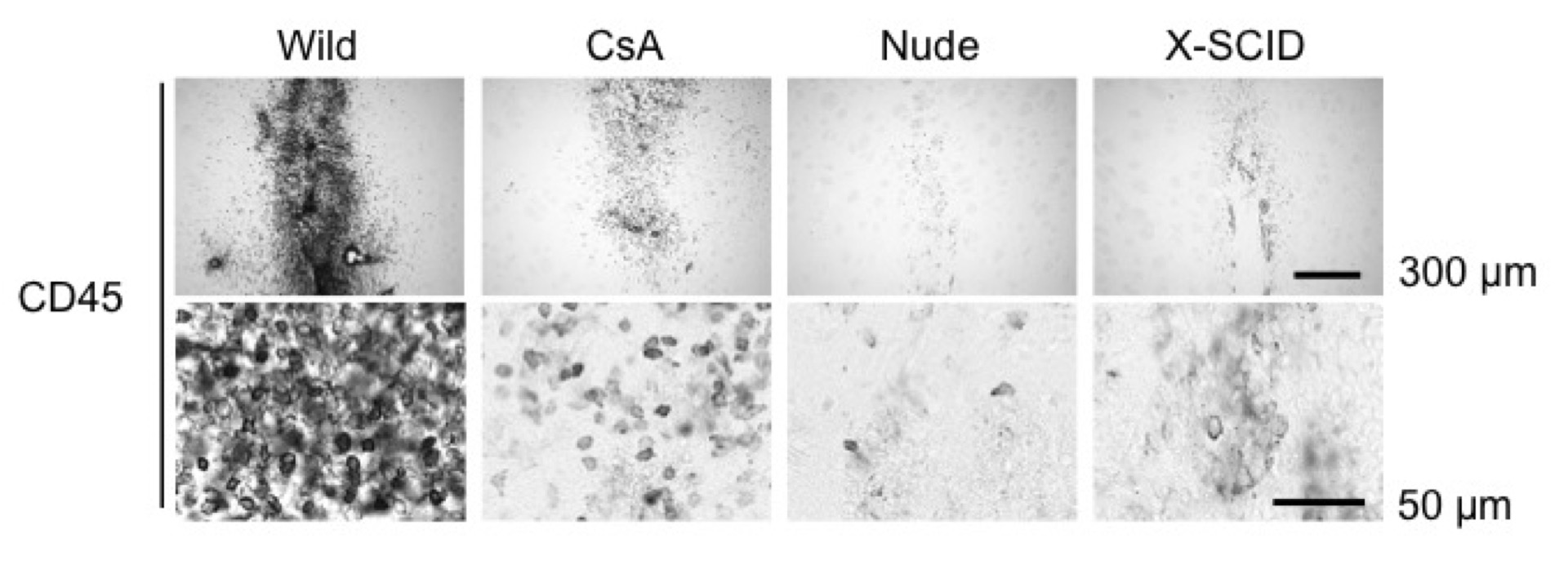
Research Activities
Research Activities
Publications
March 04, 2015
New rat model for Parkinson's disease
Severe combined immunodeficiency (SCID) is a genetic disease that devastates the immune system. Its best known victims are bubble boys who live in a world where they cannot come into physical contact with another person. Ironically, its immune suppression is a great advantage when studying the benefits of cell therapy in other diseases, since the transplanted cells are not rejected by the receipient. As such, the X-linked SCID (X-SCID) rat was invented a few years ago. A new study from the Jun Takahashi lab at the Dept. of Clinical Application explores the benefits of this rat model for the study of Parkinson's disease (PD).
Transplantation in the best current model for PD triggers an inflammation response that requires immune suppression. This suppression is normally achieved with cyclosporine A. However, cyclosporine A also hinders the maturation of neural progenitor cells and more importantly has serious cytotoxic effects on other organs. On the other hand, X-SCID rats are deficient in receptors that respond to immune signaling. The lab therefore explored whether mature human neurons could survive in these rats without the use of cyclosporine A or other immuno-suppressants.
Dopaminergic neurons were differentiated from human ES cells and human iPS cells using standard protocols. Injection of these cells into the brains of X-SCID rats triggered an insignificant immune response, unlike wild types. This response was sufficient to reject the injected neurons by 12 weeks in wild types, but not in nearly all X-SCID rats.
The simple survival of neurons, however, is only necessary and not sufficient to prove X-SCID rats as a good PD model. Therefore, the researchers simulated PD conditions using an established method. Following the development of PD symptoms, DA neurons were injected into the rats and not only showed good survival, but rats tended to recover
Professor Takahashi believes these results show promise for the model and the treatment. "These findings show that X-SCID rats exhibited minimal immune response against xeno-transplantation. X-SCID rats have promise as a PD model in preclinical studies of cell transplantation."

Image: X-SCID rats show an immune response to cell transplantation that resembles the use of the immunosuppressant cyclosporine A (CsA) in wild type rats.
Paper Details
- Journal: Journal of Neuroscience Methods
- Title: X-linked severe combined immunodeficiency (X-SCID) rats for xeno-transplantation and behavioral evaluation
- Authors: Bumpei Samata, Tetsuhiro Kikuchi, Yoshifumi Miyawaki, Asuka Morizane, Tomoji Mashimo, Masato Nakagawa, Keisuke Okita, Jun Takahashi






















